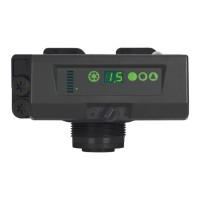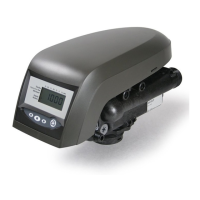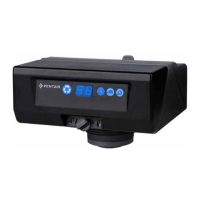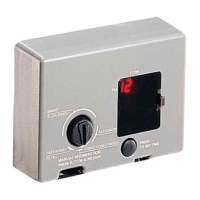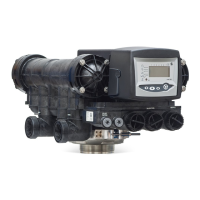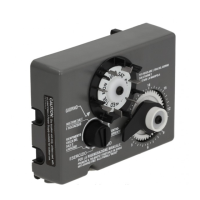C. When the thread of the screw and the thread of the hole
match, the screw will “click” and slightly drop down.
D. The threads are lined up. Lightly rotate the screw to
tighten and engage threads.
E. Once the threads have engaged the screw can be
tightened. Minimal resistance will be present as the screw
is turned in. Resistance indicates new threads are being
formed. Back the screw out and rematch the threads.
3. Turn the screw in but do not tighten.
4. Place a second screw into the hole diagonally opposite the
first screw and turn in but do not tighten.
5. Insert another screw into one of the remaining corners and
turn it in.
6. The fourth screw goes into the hole diagonally opposite.
Turn it in.
7. Put the remaining screws in following the same criss-cross
pattern working from the ends toward the center. When all
the screws are in place they can be tightened down.
8. Start at the corner of the screw pattern and tighten that
screw. Work the same pattern from the ends toward center
and criss-crossing as each screw is tightened. Check that
each valve disc moves smoothly before replacing the spring
and camshaft.
9. Replace spring.
10. Replace camshaft and motor.
11. Replace controller and wiring harnesses.
Disinfection Of Water Conditioners
The materials of construction of the modern water conditioner
will not support bacterial growth, nor will these materials
contaminate a water supply. During normal use, a conditioner
may become fouled with organic matter, or in some cases with
bacteria from the water supply. This may result in an off-taste
or odor in the water.
Some conditioners may need to be disinfected after
installation and some conditioners will require periodic
disinfection during their normal life.
Depending upon the conditions of use, the style of conditioner,
the type of ion exchanger, and the disinfectant available, a
choice can be made among the following methods.
Sodium or Calcium Hypochlorite Application
These materials are satisfactory for use with polystyrene
resins, synthetic gel zeolite, greensand and bentonites.
5.25% Sodium Hypochlorite
These solutions are commonly known as household bleach.
If stronger solutions are used, such as those sold for
commercial laundries, adjust the dosage accordingly.
1. Dosage
F. Polystyrene resin; 1.2 fluid ounce (35.5 ml) per
cubic foot.
G. Non-resinous exchangers; 0.8 fluid ounce (23.7 ml) per
cubic foot.
2. Brine tank conditioners
A. Backwash the conditioner and add the required amount
of hypochlorite solution to the well of the regenerant
tank. The regenerant tank should have water in it to
permit the solution to be carried into the conditioner.
B. Proceed with the normal regeneration.
SERVICE AND MAINTENANCE CONTINUED
Calcium Hypochlorite
Calcium hypochlorite, 70% available chlorine, is available in
several forms including tablets and granules. These solid
materials may be used directly without dissolving before use.
1. Dosage
A. Two grains (approximately 0.1 ounce [3 ml]) per
cubic foot.
2. Regenerant tank conditioners
A. Backwash the conditioner and add the required amount
of hypochlorite to the well of the regenerant tank. The
regenerant tank should have water in it to permit the
chlorine solution to be carried into the conditioner.
B. Proceed with the normal regeneration.
AUTOTROL 742/762 Control 255 & Performa Series Valves (263, 268, 268FA) Service Manual • 29
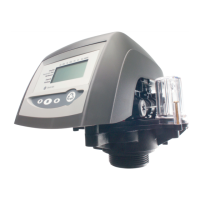
